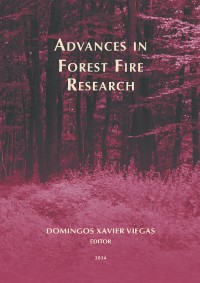Please use this identifier to cite or link to this item:
https://hdl.handle.net/10316.2/34120| DC Field | Value | Language |
|---|---|---|
| dc.contributor.author | Nichols, David | |
| dc.contributor.author | Bessell, Rachel | |
| dc.contributor.author | Cruz, Miguel G. | |
| dc.contributor.author | Gould, Jim | |
| dc.contributor.author | Hurley, Richard | |
| dc.contributor.author | Kidnie, Susan | |
| dc.contributor.author | Koul, Vijay | |
| dc.contributor.author | Slijepcevic, Alen | |
| dc.date.accessioned | 2014-10-20T16:35:40Z | |
| dc.date.accessioned | 2020-09-09T21:32:03Z | - |
| dc.date.available | 2014-10-20T16:35:40Z | |
| dc.date.available | 2020-09-09T21:32:03Z | - |
| dc.date.issued | 2014 | - |
| dc.identifier.isbn | 978-989-26-0884-6 (PDF) | |
| dc.identifier.uri | https://hdl.handle.net/10316.2/34120 | - |
| dc.description.abstract | Key to understanding fire propagation in grassland fuels is to know their annual growing cycle and the availability of biomass to be consumed by a fire. Curing is the progressive senescence and drying out of grass after flowering (annuals) or in response to drought (perennials) and is the key process transferring biomass from the live to the dead fuel component. Despite the relevance of fires in grasslands and savannah ecosystems in Australia and throughout the world, our understanding of (1) grass senescence effect on overall fuel moisture content and fuel availability, and (2) the degree of grass curing in fire behaviour, is still lacking. To investigate the effect of the curing process on grassland fire behaviour an experimental field study was conducted at two distinct locations in Victoria. Experimental burn plots size were 32 x 32 m. Simultaneous burns were conducted with one plot being fully cured (100%; control) and another being partially cured (treatment). Detailed measurements of fuel bed structure, weather variables (3D wind speed, air temperature, relative humidity and solar radiation) and fire behaviour (rate of spread, flame length, residence time and time-temperature profiles) were recorded on 52 experimental fires. The range of curing in the partially cured plots varied between approximately 35% and 90%. The range of other fire environment parameters were: 2-m wind speed: 5.4 - 20.5 km/h; ambient air temperature: 16-33 C; relative humidity: 14-40 %; Fire spread rates varied between 3.6 and 72 m/min. Preliminary analysis highlights include the observation of sustained fire spread with curing levels between 30-40% and the importance of the dead fuel component from the previous year growth to sustain propagation at these marginal conditions. The data collected is being used to reanalyze functional relationships currently used to express the effect of curing and live fuel moisture on the spread of grassland fires. | eng |
| dc.language.iso | eng | - |
| dc.publisher | Imprensa da Universidade de Coimbra | por |
| dc.relation.ispartof | http://hdl.handle.net/10316.2/34013 | por |
| dc.rights | open access | - |
| dc.subject | Grass curing | eng |
| dc.subject | grass fire behaviour | eng |
| dc.subject | fire danger ratings | eng |
| dc.title | The effect of grass curing level on the propagation of grassland fires – an experimental study | por |
| dc.type | bookPart | por |
| uc.publication.firstPage | 438 | - |
| uc.publication.lastPage | 439 | - |
| uc.publication.location | Coimbra | por |
| dc.identifier.doi | 10.14195/978-989-26-0884-6_49 | - |
| uc.publication.section | Chapter 1 - Fire Behaviour and Modelling | por |
| uc.publication.digCollection | PB | por |
| uc.publication.orderno | 49 | - |
| uc.publication.area | Ciências da Engenharia e Tecnologias | por |
| uc.publication.bookTitle | Advances in forest fire research | - |
| uc.publication.manifest | https://dl.uc.pt/json/iiif/10316.2/34120/211819/manifest?manifest=/json/iiif/10316.2/34120/211819/manifest | - |
| uc.publication.thumbnail | https://dl.uc.pt/retrieve/11177022 | - |
| uc.publication.parentItemId | 53868 | - |
| uc.itemId | 70394 | - |
| item.grantfulltext | open | - |
| item.fulltext | With Fulltext | - |
| Appears in Collections: | Advances in forest fire research | |
Files in This Item:
| File | Description | Size | Format | |
|---|---|---|---|---|
| 978-989-26-0884-6_49.pdf | 1.24 MB | Adobe PDF |  |
Items in DSpace are protected by copyright, with all rights reserved, unless otherwise indicated.
